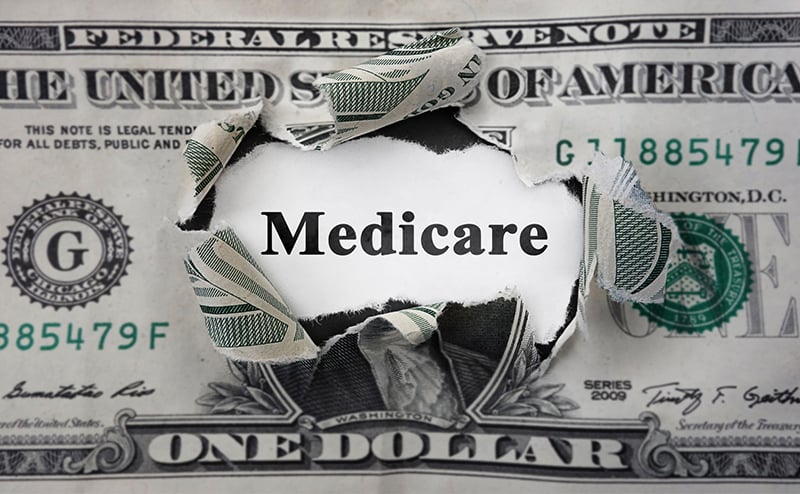Every year, the Medicare “Trustees” issue a comprehensive report outlining the financial outlook for the Medicare program in both the short-term and the long-term (i.e., the next 75 years!). Before breaking down this year’s report—which was just released last week—let’s cover some of the basics.
First, who are the Medicare “Trustees” who supposedly draft the report? The Trustees are the Secretaries of the Departments of Health and Human Services (HHS), Labor, and Treasury, as well the Commissioner of the Social Security Administration. However, they obviously aren’t the ones actually writing the report. The actuaries at the Centers for Medicare & Medicaid Services (CMS) within HHS have that honor!
Second, it is important to understand how Medicare is financed—if you don’t know that already. Medicare includes two Trust Funds: the Federal Hospital Insurance (HI) and the Federal Supplementary Medical Insurance (SMI) Trust Funds. The HI Trust Fund funds Medicare Part A, which covers hospital inpatient services and certain other services delivered in facilities. HI is funded mainly by a 2.9 percent payroll tax that employees and employers pay (although high-income workers pay a slightly higher percentage). The SMI Trust Fund funds Medicare Parts B and D. Medicare Part B covers outpatient services (like the services reimbursed under the physician fee schedule that you all provide as emergency physicians), while Medicare Part D covers prescription drugs. SMI is mainly funded by premiums and supplemented by general revenue from the U.S. Treasury. If you are paying attention, you’ll notice that I left out Medicare Part C—or Medicare Advantage. Funding for Medicare Advantage (Medicare administered by private health plans) comes from both the HI and SMI Trust Funds.
Now that you know the basics, you can better understand what issues Medicare can run into financially. Have you ever heard that Medicare is going bankrupt? Well, when people say that, they are referring to the HI Trust Fund. As you recall, the HI Trust Fund is financed by payroll taxes—and in some years, total Medicare spending under Medicare Part A is greater than the total amount of payroll taxes that HI Trust Fund collects as revenue. In this year’s report, the CMS actuaries project that expenditures will outweigh revenue for the next few years. This pattern will cause the HI Trust Fund to become “depleted” in 2026—meaning that the HI Trust Fund won’t have enough money to pay for all Medicare Part A services. What will CMS do when that happens? We don’t know exactly, since it’s never happened—but Congress may need to intervene to ensure that the HI Trust Fund is sufficiently replenished.
Part of the reason why the HI Trust Fund has a chance of becoming exhausted is that other federal sources of income are not allowed to swoop in and cover any revenue shortfalls. The SMI Trust Fund, on the other hand, doesn’t have this issue. General revenue from the U.S. Treasury can be used to help ensure that the SMI Trust Fund can always cover all Medicare Part B and D expenditures.
Medicare Part B premiums cover roughly one-quarter of the total projected spending for Part B. In 2021, the monthly Part B premium is $148.50. However, to cover a projected increase in expenditures, the actuaries are estimating a monthly premium for 2022 of $158.50, which is a $10 or 6.7 percent increase over the current premium. This is obviously a significant increase which could hurt seniors who live on fixed incomes. The HHS Secretary does have the authority to alter the Medicare Part B premium from what the actuaries estimate and recommend. In addition, Congress has occasionally stepped in to protect Medicare beneficiaries from high premiums.
While there is a lot of other financial information about the Medicare Trust Funds included in the report, I want to highlight one other interesting tidbit that is buried in there. It is no surprise to you all that Medicare payments to physicians under the physician fee schedule (PFS) are insufficient and do not nearly cover the cost of providing services. However, what is surprising is that the actuaries actually openly admit this in the Trustees Report! They state that, due to the low reimbursement rates, access to Medicare-participating physicians will become a significant issue in the long term absent a change in law. Further, although Medicare physician payments were unsustainably low under the “sustainable growth rate” (SGR) formula—which was repealed in 2015 by the Medicare Access and CHIP Reauthorization Act (MACRA)— the CMS actuaries actually think that physician payments will be lower than they would have been under the SGR formula by 2048. In other words, the current physician payment system instituted by MACRA will actually be worse in the long term than the SGR formula—even though the primary purpose of MACRA was to be a viable solution to the SGR formula! The main flaw of MACRA is that it only allows for small annual updates going forward—updates that don’t even come close to accounting for inflation.
To make matters worse, Medicare payments are subject to a 2 percent cut (called a “sequester”) through 2030. This automatic payment cut, which was initiated by Congress as a means of controlling government spending back in 2011 (it started reducing payments in 2013), is temporarily suspended due the COVID-19 pandemic, but is expected to pick back up on January 1st, 2022. At that time, another sequester of 4 percent is supposed to trigger—this one implemented recently to offset some of the costs of the American Rescue Plan Act. Thus, at the start of the year, the two sequesters combined will cut your payments by 6 percent. And sadly, CMS is planning a cut to the 2022 PFS “conversion factor” of 3.75 percent, which brings the total expected payment cut in 2022 to 9.75 percent (6 percent from sequesters + 3.75 percent from the PFS).
ACEP is working hard to prevent these significant cuts from taking place. While CMS may have some ability to lessen the cut to the PFS conversion factor, it will mainly be up to Congress to pass legislation to stop sequestration from triggering and to increase Medicare reimbursement rates. In late July, during the ACEP Leadership and Advocacy Conference in Washington, DC, ACEP advocates urged lawmakers to take action before the end of the year to protect Medicare reimbursement rates. Now Representative Ami Bera, MD (D-CA) and Representative Larry Bucshon, MD (R-IN) are circulating a bipartisan letter to House leadership that urges Congress to pass legislation to prevent the cuts and to begin consideration of broader, long-term reform to bring stability to the Medicare payment system.
You can take action now by urging your legislator in the U.S. House of Representatives to sign onto the bipartisan Dear Colleague letter. Click here to send an email to your representative.
Until next week, this is Jeffrey saying, enjoy reading regs with your eggs.






